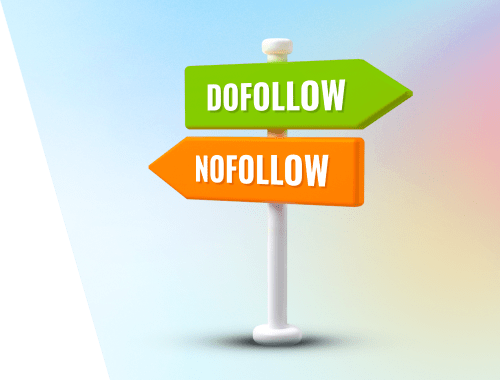516
•
12-minute read


In this short video, we'll learn what dofollow and nofollow links are, explore the difference between them, and see how to easily find nofollow and dofollow links on your website with SEO PowerSuite's SEO SpyGlass tool.
In this video, you'll learn a quick and super easy way to find nofollow and dofollow links.
Hey there, it's Mary from SEO PowerSuite, the all-in-one toolkit that covers every aspect of SEO. Before we begin, make sure to subscribe to our channel and click the bell icon so you won't miss any upcoming tutorials.
Before we delve into uncovering nofollow and dofollow links, let's briefly clarify these terms.
"Nofollow" and "dofollow" are attributes assigned to hyperlinks on webpages. They play a crucial role in determining how search engines like Google treat these links.
Nofollow links are those that have the "nofollow" attribute in their HTML code.
These links are essentially telling search engines, "Hey, don't follow this link, and don't consider it when calculating search engine rankings."
"Nofollow Link: Click here"
Nofollow links are often used for user-generated content, sponsored links, or any situation where you don't want to pass on SEO "juice" to the linked page.
Now, let's talk about dofollow links. These are the default type of links you usually encounter.
They don't have any special attributes, and search engines treat them as endorsements, passing on link authority and contributing to the linked page's SEO.
"Dofollow Link: Click here"
Dofollow links are crucial for building a strong link profile, improving your website's visibility in search results.
So, how do you find these elusive nofollow and dofollow links?
Let's break it down.
I will use SEO SpyGlass, the backlink software for link audit and research. Launch SEO SpyGlass and create a project. The program will take a few moments to gather the backlinks from the selected source(s) and load them to the project, as well as will check the overall domain metrics.
When it’s done, switch to the Backlinks section, click the Update Factors button, and then select the Backlink Page Info alone. The program will scan the backlink pages directly to check the presence, the status (do/nofollow), and the anchor details of the backlinks in real-time.
Pay attention to the Links Back column. This is where you will see the necessary link statuses.
And that’s it! Now you can identify nofollow or dofollow links making just a few easy steps. Remember, both types have their place in the digital landscape, so use them wisely to optimize your website's SEO strategy.
If you found this video helpful, make sure to subscribe to our channel and stay tuned for more valuable tips and tricks to optimize your website's performance.
Until next time, take care, and happy optimizing!

